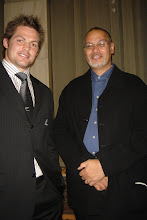This starts in Taranaki. Te Ua Haumene began a Religion which he called Pai Marire, which means "Good and Peaceful'. It established itself as an alternative to other mainstream(European) religions and quickly found converts especially in the southern Taranaki. (see the 'Maori Prophets' Handout). While he had one view many of his followers saw it as something different. They especially drew strength from his belief that the Europeans wouldone day be driven from New Zealand.
Belich makes the point that in many ways the Kupapa who fought in these wars did so as representatives of the old order fighting against Hauhau who represented a newer pan-tribal unification under Pai Marire.
(Much of this material is drawn from Ranginui Walkers 'Opotiki Mai Tawhiti' a History of Whakatohea). Ishould also note here that I am Whakatohea and have my own perspective on this chapter in our history
The Pai Maririe leader Te Ua sent some envoys to the East Coast who passed through the Bay of Plenty. At Opotiki they spent some time amongst the Whakatohea. Unfortunately the Iwi had lost many of its best and wisest leaders in the Musket Wars and had not yet recovered. Kereopa, one of the envoys appears to have foregone the 'good and peaceful' message of Te Ua and become incensed by a local Missionary Carl Volkner. Volkner had foolishly become involved in reporting Maori activities to the Government. He had been warned but ignored advice and returned to Opotiki. Without wiser counsel from Whakatohea leaders Kereopa had Volkner imprisoned, and later he was hung outside his church. Kereopa invoked ancient rites and ate his eyes... Perhaps stronger leadership might have stopped the Pai Marire leaders rampage. Kereopa then left for the East Coast, taking Volkners head with him, where he helped provoke a (religious) civil war amongst the Ngati Porou, causing enormous damage and numerous casualties. Much of this war has slipped under the radar of modern historians, mainly because there were few Pakeha who observed the fighting or recorded its course.
Kereopa then left for the East Coast, taking Volkners head with him, where he helped provoke a (religious) civil war amongst the Ngati Porou, causing enormous damage and numerous casualties. Much of this war has slipped under the radar of modern historians, mainly because there were few Pakeha who observed the fighting or recorded its course.
Kereopa was eventually tracked down and brought to justice (hung)but not before the full weight of the Governments Utu had desended upon the Whakatohea, stripping them of much of their land and the execution of several chiefs who were present at, but not responsible for Volkners death. Kupapa from Whanganui led by Major Keepa (Kemp) played a major part in this.
Titokowaru and Te Kooti were involved in fighting on different sides of the island. Both were fighting because of a sense of injustice. For Te Kooti this was more personal as he had been falsely accussed of being a Hau Hau and exiled to the Chathams where fever nearly killed him. Visions while he was sick saw him become a religious leader. He eventually he led 300 supporters back to the mainland. When the officials in Gisborne refused to allow him amnesty he turned and sought revenge at Matawhero where 50 people, Maori and Pakeha were killed. Many of those who died were those Te Kooti held reponsible for his original conviction.
A pursuit by Militia and Kupapa trapped te Kooti at Nga Tapa where the wily old leader escaped by climbing down the cliff with his supporters. A chase caught many, most of whom were prisoners from Matawhero. Despite this incensed Kupapa took their utu by executing many of them.
Te Kooti then led the Government militia (including my Great Grandfather) and their Kupapa allies led by Whitmore on a wild chase around the Urewera Mountains which lasted severl years. Te Kooti sought refuge with the King but was initially rejected, another attempt several years later was more warmly received and te Kooti ceasde his campaign and retired into the Rohe of the King. Tuhoe who had assisted Te Kooti in his campaigns, were less lucky. As a final act of utu, the Militia destroyed every Kainga and garden surronding Waikaremoana resulting in widespread famine amongst Tuhoe that year.
Tikowaru was a Methodist convert who had fought in Taranaki (losing an eye) but later supported peace. He campaigned for a "year of the Lamb'.While much of Taranaki had been confiscated this was a 'paper' confiscation. The Government could claim land was confiscated but simply could not survey and sell all of it immediately. Consequently Maori found it hard to see the confiscation as being real. His ideal of the 'year of the lamb' however was forgotten as 'creeping confiscation' saw more and more land lost to settlers. Titokowarus campaign included older elements of worship including ritualised cannibalism, (and the taking of a head) creating panic amongst settlers especially when he defeated several larger Militia forces. The campaign was vicious and short lived. it ended with Titokowaru's apparent loss of Mana and withdrawal into the interior.
While this was an end to the Wars, Maori would now face attack from a more insidious and perilous enemy, the Court of Law.





It says that Te Kooti is a religious leader but it didnt state the religion?!
ReplyDeletehe didnt follow Pai Marire?
how does it connect to what was happening earlier..with kereopa, Opotiki...etc..?